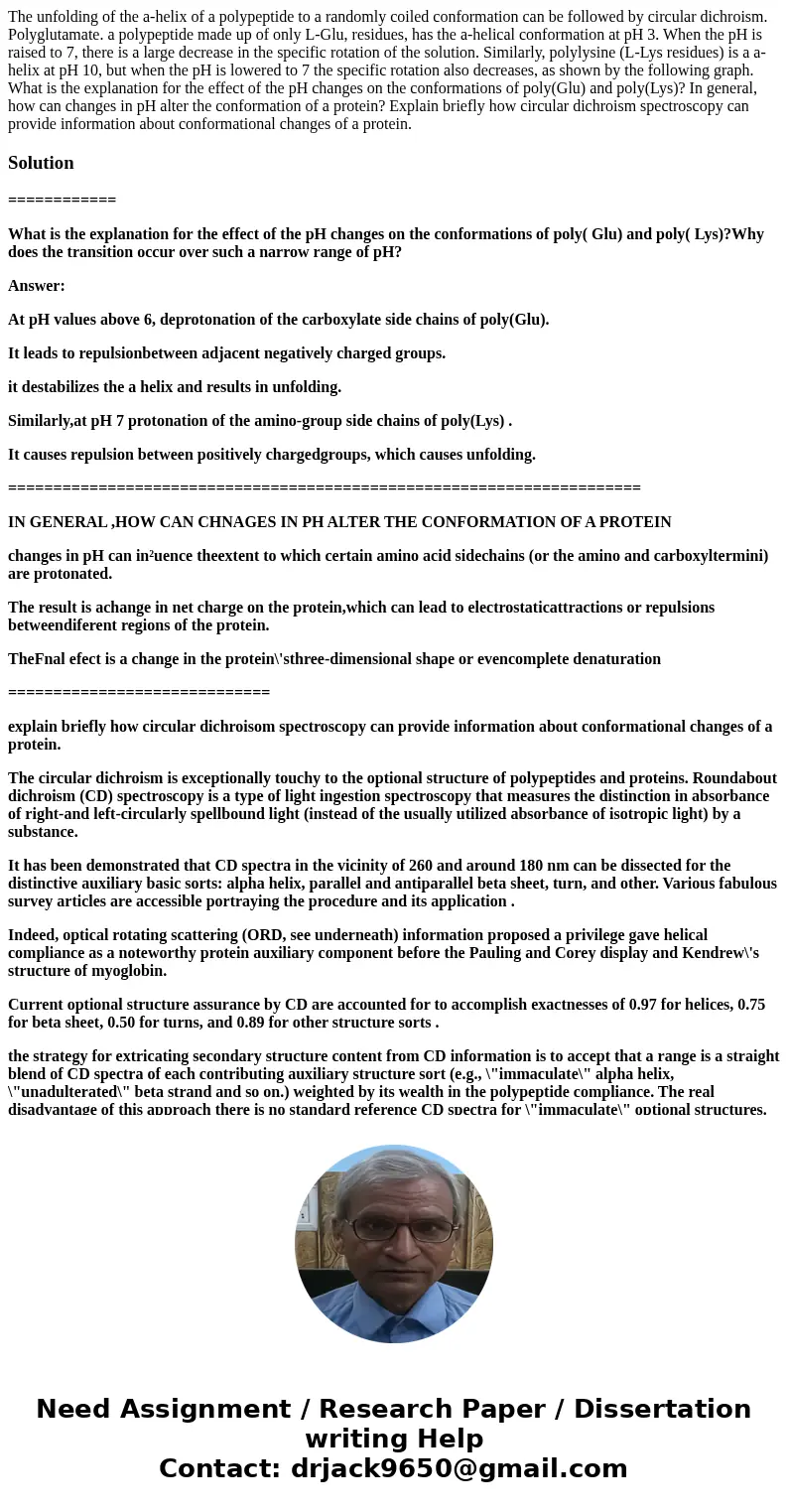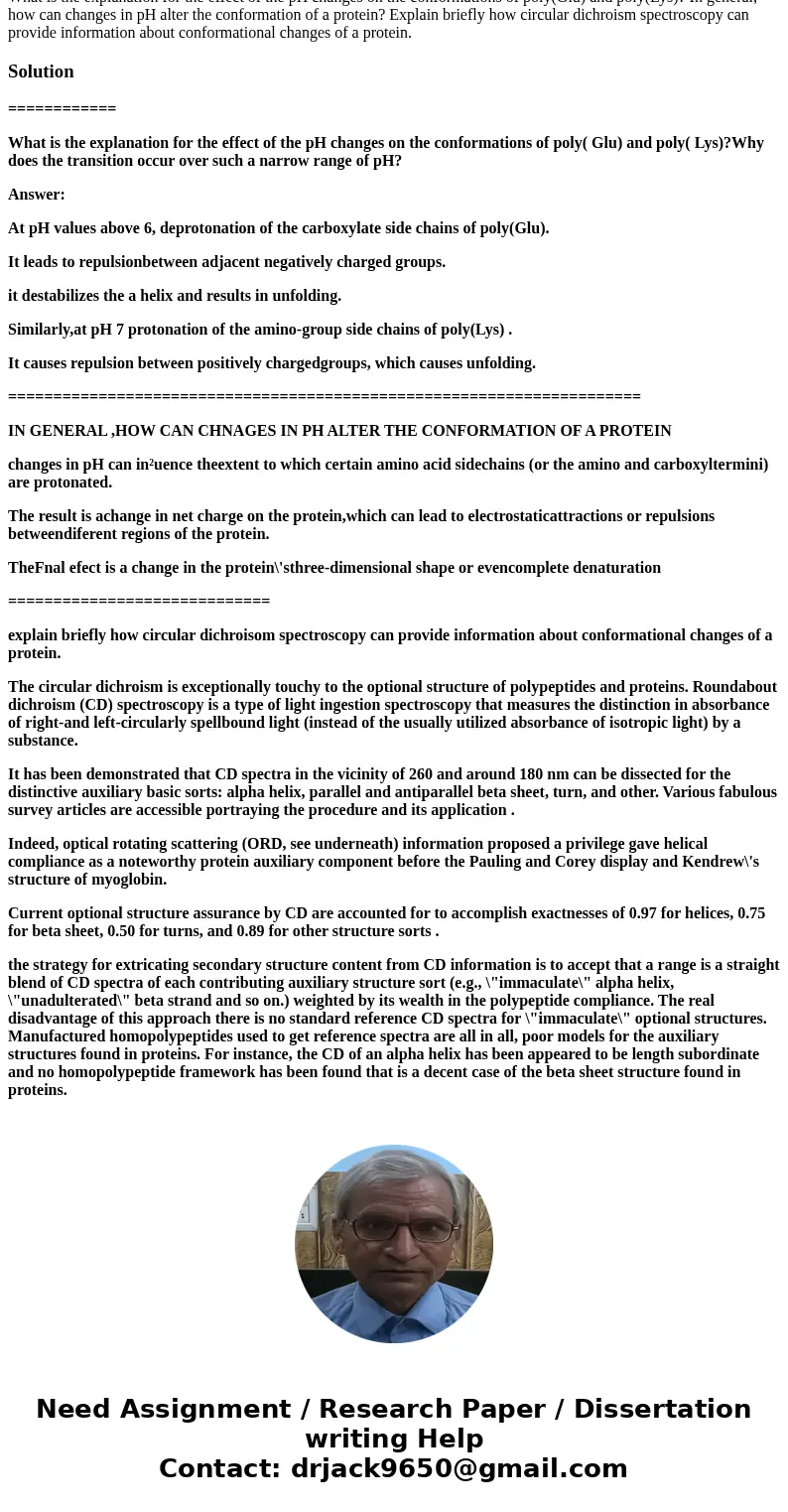The unfolding of the ahelix of a polypeptide to a randomly c
Solution
============
What is the explanation for the effect of the pH changes on the conformations of poly( Glu) and poly( Lys)?Why does the transition occur over such a narrow range of pH?
Answer:
At pH values above 6, deprotonation of the carboxylate side chains of poly(Glu).
It leads to repulsionbetween adjacent negatively charged groups.
it destabilizes the a helix and results in unfolding.
Similarly,at pH 7 protonation of the amino-group side chains of poly(Lys) .
It causes repulsion between positively chargedgroups, which causes unfolding.
======================================================================
IN GENERAL ,HOW CAN CHNAGES IN PH ALTER THE CONFORMATION OF A PROTEIN
changes in pH can in²uence theextent to which certain amino acid sidechains (or the amino and carboxyltermini) are protonated.
The result is achange in net charge on the protein,which can lead to electrostaticattractions or repulsions betweendiferent regions of the protein.
TheFnal efect is a change in the protein\'sthree-dimensional shape or evencomplete denaturation
=============================
explain briefly how circular dichroisom spectroscopy can provide information about conformational changes of a protein.
The circular dichroism is exceptionally touchy to the optional structure of polypeptides and proteins. Roundabout dichroism (CD) spectroscopy is a type of light ingestion spectroscopy that measures the distinction in absorbance of right-and left-circularly spellbound light (instead of the usually utilized absorbance of isotropic light) by a substance.
It has been demonstrated that CD spectra in the vicinity of 260 and around 180 nm can be dissected for the distinctive auxiliary basic sorts: alpha helix, parallel and antiparallel beta sheet, turn, and other. Various fabulous survey articles are accessible portraying the procedure and its application .
Indeed, optical rotating scattering (ORD, see underneath) information proposed a privilege gave helical compliance as a noteworthy protein auxiliary component before the Pauling and Corey display and Kendrew\'s structure of myoglobin.
Current optional structure assurance by CD are accounted for to accomplish exactnesses of 0.97 for helices, 0.75 for beta sheet, 0.50 for turns, and 0.89 for other structure sorts .
the strategy for extricating secondary structure content from CD information is to accept that a range is a straight blend of CD spectra of each contributing auxiliary structure sort (e.g., \"immaculate\" alpha helix, \"unadulterated\" beta strand and so on.) weighted by its wealth in the polypeptide compliance. The real disadvantage of this approach there is no standard reference CD spectra for \"immaculate\" optional structures. Manufactured homopolypeptides used to get reference spectra are all in all, poor models for the auxiliary structures found in proteins. For instance, the CD of an alpha helix has been appeared to be length subordinate and no homopolypeptide framework has been found that is a decent case of the beta sheet structure found in proteins.


 Homework Sourse
Homework Sourse